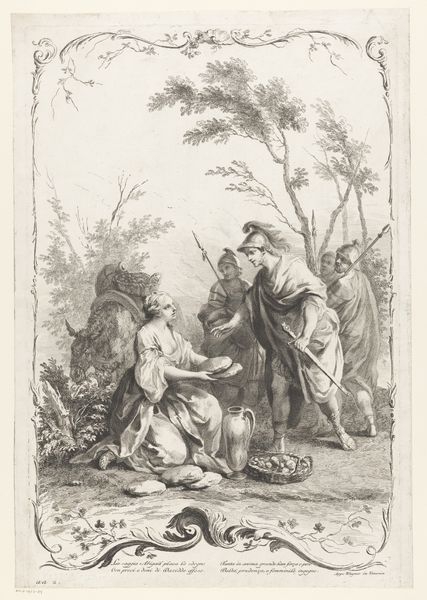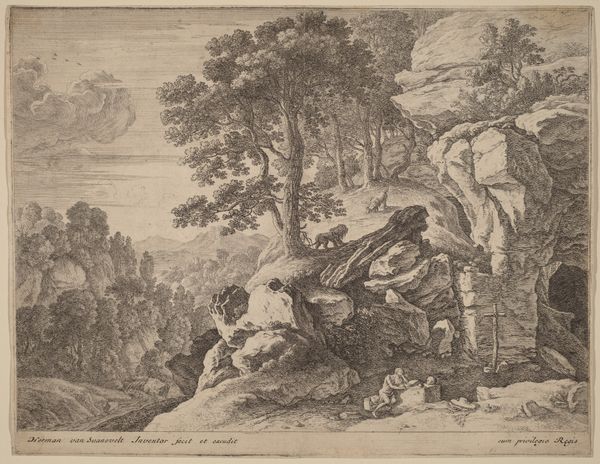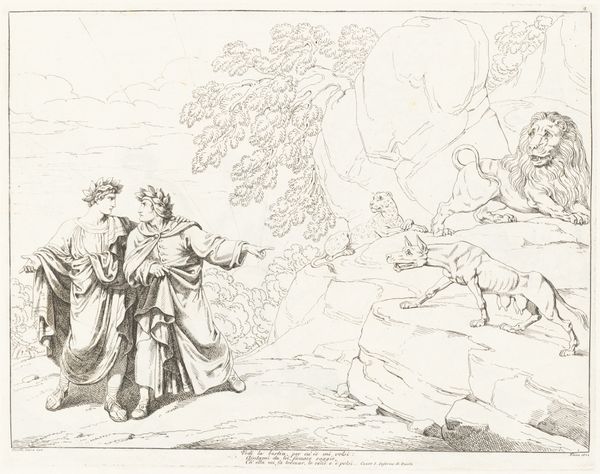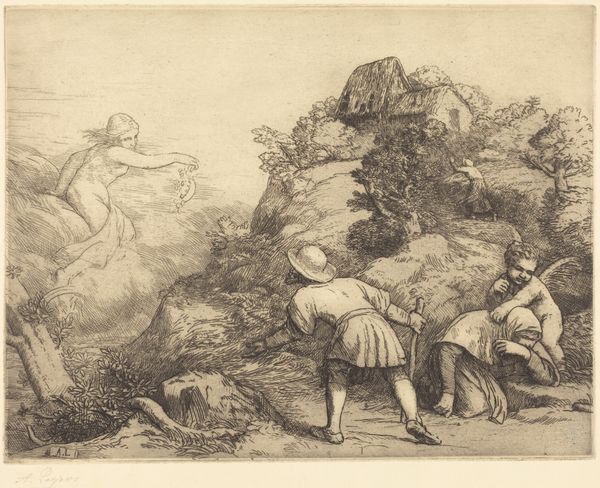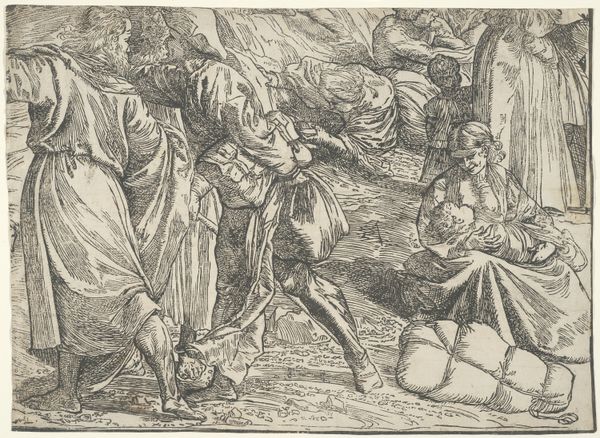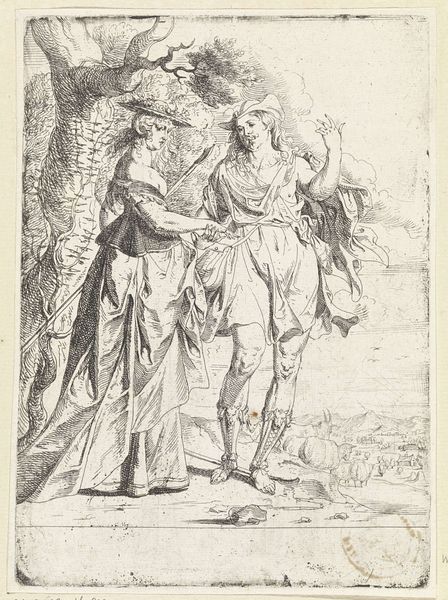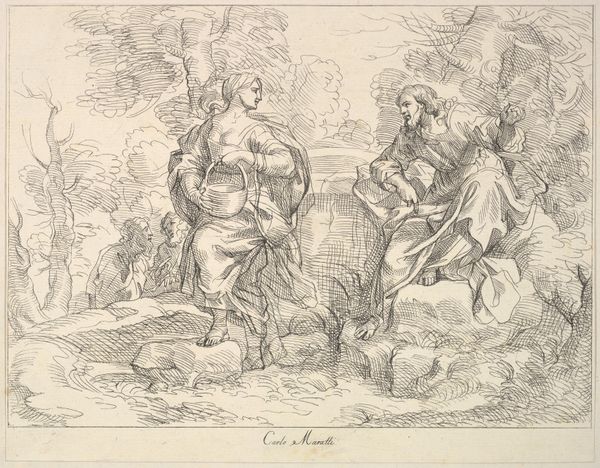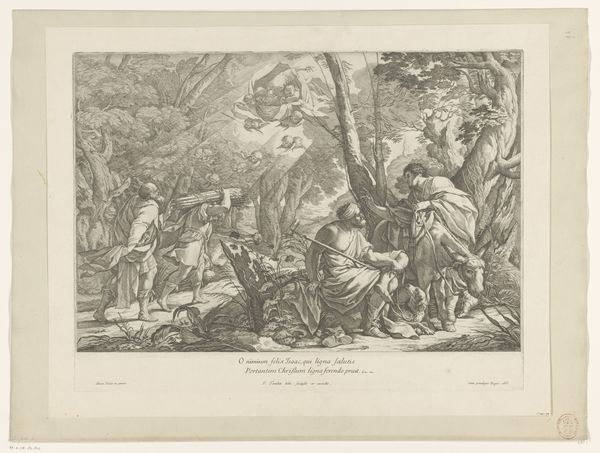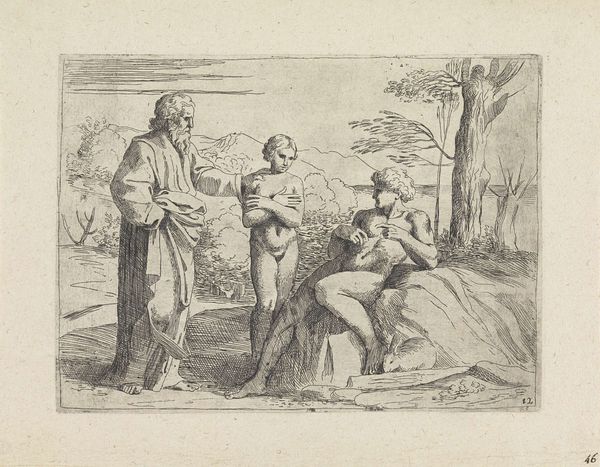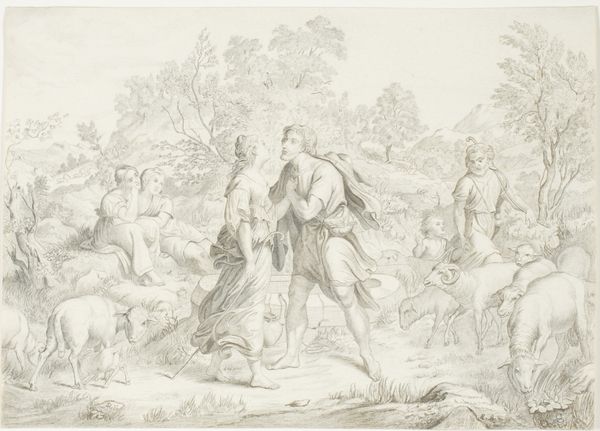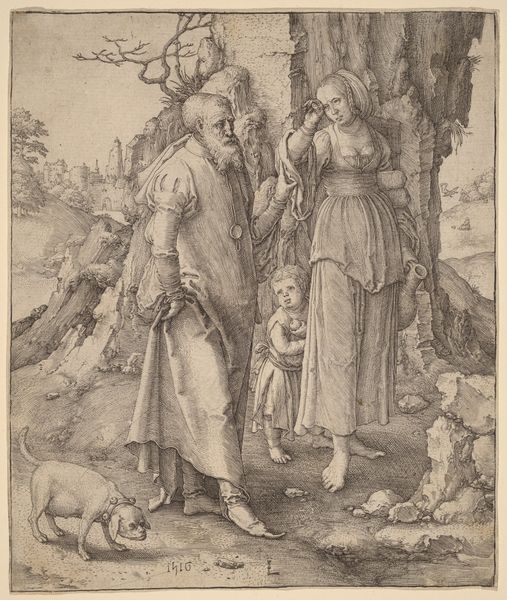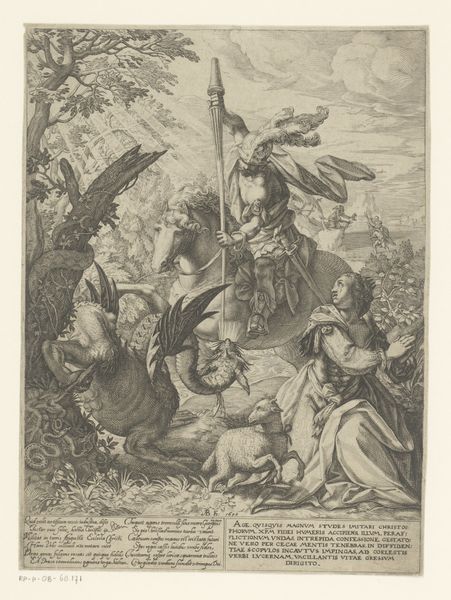
print, engraving
#
allegory
#
baroque
# print
#
figuration
#
chiaroscuro
#
line
#
history-painting
#
engraving
Dimensions: height 273 mm, width 310 mm
Copyright: Rijks Museum: Open Domain
Curator: Here we have "Martyrdom of Four Saints," an engraving by Giovanni Battista Vanni, created around 1638. Editor: Immediately, I’m struck by the harsh lines, the overwhelming feeling of brutality, and the passivity of the figures. It is unsettling, despite the idealized bodies. Curator: The print certainly embodies the drama characteristic of the Baroque era, a potent mix of idealized form and harsh reality. Consider the socio-political context, though. Vanni was working amidst intense religious conflicts and anxieties. Does that change how you read the scene? Editor: Absolutely. Looking closely at the act of creating prints like these, it's important to see it as an industry—prints were a form of disseminating imagery, reaching audiences far removed from the elite art world. How do you think Vanni’s choices reflected these production demands? Curator: That's insightful. Consider how the use of line in the engraving contributes to the intense chiaroscuro effect. Light and shadow are deployed strategically here, emphasizing the emotional gravity and religious fervor. It is less a depiction of literal martyrdom, more a visual metaphor. How does the work position viewers in relationship to the act? Editor: Interesting point! It emphasizes how engravings can create meaning through technical and formal means. I still feel like the sheer repetition and consumption of violence here – even symbolically, is doing real cultural work and normalizing things. The way the bodies are presented has consequences. Curator: The image prompts vital dialogue about how faith, power, and the suffering body are represented. Ultimately, Vanni's work prompts contemplation on the convergence of physical, spiritual, and political realms. Editor: Examining the materials and process invites an investigation into how printmaking played a significant part in visualizing baroque ideologies. This provides ways to think more about our complicity in systems of cultural production.
Comments
No comments
Be the first to comment and join the conversation on the ultimate creative platform.
